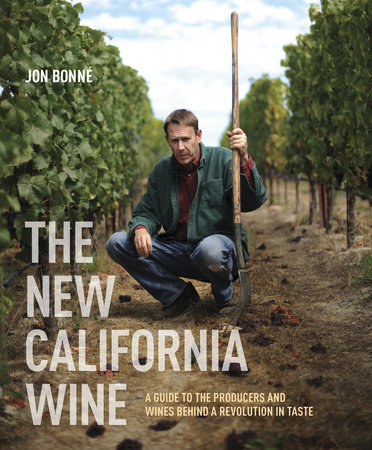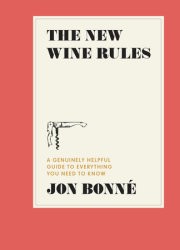Introduction “I hear you hate California wine.”
The spokeswoman for one of the state’s most powerful wine personalities was on the phone. I wasn’t in the mood.
“If I hated California wine,” I replied, “would I be doing what I do?”
I knew, when I moved to California in 2006, that I was facing long odds. I had come to a place that believed, above all, in the superiority of its wines. Anyone who didn’t embrace that belief was viewed as a threat. And in the past I had dared to voice my dissatisfaction with a California wine culture that I saw as often self-satisfied and underwhelming. Worse, I was from the East Coast, an outsider. My years spent in New York, where I learned from my father about European wines from Vouvray to Valpolicella, were a liability instead of an asset.
Six years earlier I had moved to Seattle, and while there I came to love West Coast wines—in particular the pioneering wines of Washington State. I began my wine-writing career there. Clearly, I was no foe of American winemaking. But none of that mattered the moment I landed at the Oakland airport.
I had come to the Bay Area to run the wine section of the
San Francisco Chronicle, six to ten pages of some of the country’s most influential wine journalism. The California wine industry was not pleased: their work was about to be judged by someone whose palate was honed not on hefty Cabernet and Zinfandel but on nuanced Old World wines.
I approached my work earnestly. But from the moment I arrived, I had to confront my own deep skepticism about California’s winemaking reality. Again and again I was disappointed by what I found to be the shortfalls of California wine: a ubiquity of oaky, uninspired bottles and a presumption that bigger was indeed better.
The truth was, I had come to California to be convinced. I was looking for signs that skeptics like me were wrong, and that what had long been a near-magical land for wine could still achieve greatness.
Whatever I might have thought about California wines at that point, I had started from a place of love. In February 1985, when I was twelve, my father took our family to California. At the time I was far more interested in the Apple factory tour in Cupertino, but Dad had always brought us up around wine. He gave me my first glass at age five, and soon enough I was having a bit with dinner most nights. When he took us to Napa Valley, it was clear we were somewhere special. We visited the Robert Mondavi Winery, with its campanile and familiar arch, the brick-and-mortar icon from the labels I had often seen around the house. Even then I knew we had arrived at the cradle of American wine. California wines at the time were vibrant, the industry invigorated by its speedy rise to rival Europe in quality.
Why, then, had California wine fallen into such a stupor years later? That was the question I set out to answer. I wanted to reconcile these two Californias—the one I remembered that was so full of promise and life, and the one that was stuck in a self-satisfied funk.
My first couple of years in California were tough. I hunted desperately for local wines worth praising while I featured lots of imports in the newspaper’s wine section, arguing that the Bay Area in fact had a critical mass of great importers (like Berkeley’s Kermit Lynch). This argument did not sit well among partisans of California’s wines, but I couldn’t overlook the sad fact that Napa had become a bombastic shell of its earlier, humbler self. Its top names—Beaulieu and Beringer and even Mondavi—had grown into big corporate entities, while its smaller labels were locked in an arms race, each trying to create bigger, riper, and more outrageous wines.
Still, I had come prepared with good leads. Just two weeks into the job I had to choose our winemaker of the year, and quickly enough I selected Paul Draper of Ridge Vineyards. Draper’s work was beyond reproach: for nearly forty years he had been at the helm at Ridge, where he made not only the state’s benchmark Zinfandel-focused wines, Geyserville and Lytton Springs, but also one of the finest Cabernet-based wines in the world, Monte Bello.
My choice of Draper came with a subtler message. In the midst of an industry that had blindly embraced technology and by-the-numbers winemaking, he was an outspoken traditionalist. He rejected commercial yeasts and fancy flavor-enhancing techniques and was a vocal critic of the science-minded efforts of the University of California at Davis, one of the top winemaking schools in the world.
More than that, he believed that the making of wine was sacrosanct, a true expression of the land. Wine “was traditionally the central symbol for transformation, because the grape transforms itself simply by being broken by man, because it transforms itself with nothing else,” he told me at the time.
By choosing Draper, I had set a theme for my work. I quietly kept searching for wines that I felt reflected what I knew California could offer. The following year, my winemaker of the year was Josh Jensen of Calera. Known as Mr. Limestone, Jensen in the 1970s had pioneered the quest for great Pinot Noir grown on calcareous soils that approximated those of Burgundy—and paid a critical price over the years for stubbornly refusing to give in to the whims of fashion.
Slowly, I encountered other winemakers with similar beliefs. I found people who remained committed to restrained, compelling wines that spoke clearly of their origins—and who shared my frustration with California’s modern style.
Some, like Draper and Jensen, had been toiling for decades; others were upstarts with the same energy and ambition as the pioneers from previous generations. Eventually, the brushstrokes began to turn into something recognizable: the seeds of a new movement, a new California wine in the making.
This was more than just a blip. Wines from emerging producers like Lioco, Broc Cellars, and Matthiasson, which just a few years earlier would have been decidedly fringe for California, had by 2010 amassed a loyal audience. They were being sought out by the disillusioned fans of an earlier California generation who believed that modern winemaking had forsaken them. They also attracted sommeliers and wine buyers who had previously all but written off California as well as those who had shunned domestic wine in favor of imported until finally finding bottles that spoke their aesthetic language. That year, I wrote a piece for
Saveur magazine making a case for the New California wine—and by that time, talk of a grand revival no longer seemed unrealistic.
New California’s winemakers share similar sensibilities: an enthusiasm for lessons learned from the Old World, but not the desire to replicate its wines; a mandate to seek out new grape varieties and regions; and, perhaps most important, an ardent the belief that place matters. They are true believers in terroir. This is crucial because California’s future ultimately depends upon wines that show nuance, restraint, and a deep evocation of place.
But California is also somewhat obsessed with size. Although there are hundreds of small family wineries throughout the state, the industry is dominated by its Big Three: Gallo, Constellation Wines, and the Wine Group. In 2011, according to industry investor David Freed, the Big Three were responsible for more than 64 percent of the state’s wine shipments; they made two of every three bottles of California wine. If you don’t recognize their names (though certainly Gallo is ubiquitous), you know their brands. Gallo’s empire covers everything from Barefoot to Louis Martini to Apothic and Turning Leaf. After a blitzkrieg buying spree over the past decade, Constellation now owns Robert Mondavi, Ravenswood, Clos du Bois, and nearly two dozen other labels. And the Wine Group controls much of the rest of the supermarket shelves, including brands like Franzia, Cupcake, Glen Ellen, and Concannon.
That doesn’t even factor in the massive influence of Fred Franzia’s Bronco Wine Company, maker of twenty million cases worth of Charles Shaw wines (better known as Two Buck Chuck) and dozens of other labels. It is estimated that Bronco and the four next largest labels—Trinchero (Sutter Home, Ménage à Trois), Kendall-Jackson, Delicato (Gnarly Head, Irony), and Treasury Wine Estates (a former division of Australian brewer Foster’s that encompasses Beringer, Meridian, and more)—account for another 20 percent of the California wine industry. In other words, sea change in the overall market for California wine only happens when the Fred Franzias of the world get involved.
Yet California’s state of the art has typically been judged on an elite roster of producers. When the state’s wine style shifted in the 1990s, it happened not among makers of table wine but among a small set of mostly Cabernet specialists.
That’s why, when I sought signs of change in California winemaking, I knew I needed to hunt among the little guys. Change always comes first at a small scale—in part because, as vineyard owner David Hirsch might put it, you have to apply yourself to a specific place in order to begin to understand the thousand tiny things that allow you to make great wine.
The winemakers you’ll find in the following pages aren’t meant to represent all of the state’s ambitions. Rather, they are pioneers, setting the agenda for the New California wine.
Not every young winery appears. Some are too wedded to the aesthetics of the previous generation; others may be too new. In this book you’ll also find some older wineries like Calera and Ridge, with reputations that stretch back for decades. They appear here because they have stayed the course through darker times.
The book is divided into three sections. The first part, “Searching for the New California,” aims to take you along on my journey to discover the many changes taking place and meet the people behind them. The second part, “The New Terroir,” is a road trip through some of the regions that are helping to redefine California winemaking. The third, “Wines of the New California,” lays out essential producers and their wines and discusses the changes in winemaking and wine styles in recent years.
Each section addresses an aspect of what I’ve come to believe: this is the best time in a generation to drink California wine. More than that, today marks the arrival of a mature American wine culture, where producers are confident enough not to mimic the Old World or obscure the nuances of terroir with clever cellar work, but rather seek greatness in a uniquely American context.
That is the wonderful reality of the New California.
Copyright © 2013 by Jon Bonne. All rights reserved. No part of this excerpt may be reproduced or reprinted without permission in writing from the publisher.






![The New French Wine [Two-Book Boxed Set]](https://images.penguinrandomhouse.com/cover/9781607749233?width=180)


